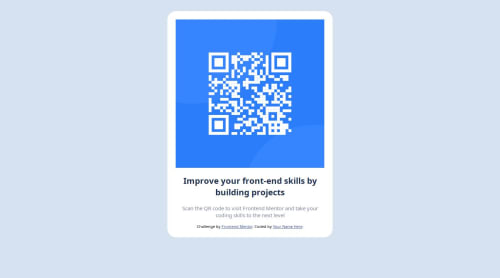Submitted over 1 year agoA solution to the QR code component challenge
Responsive qr-code single page application using HTML and CSS
@keziabaidoo

Solution retrospective
What are you most proud of, and what would you do differently next time?
I am proud of my ability to design the QR code exactly as it was intended to look. It was challenging, but I could accomplish it with my skills and knowledge. As I continue to work with this technology, I am also interested in exploring other frameworks to enhance my expertise and broaden my knowledge base.
What challenges did you encounter, and how did you overcome them?I found CSS positioning and alignment challenging, but reading about it gave me a better understanding.
What specific areas of your project would you like help with?After completing this project, I am excited to seek help and support from the community for future challenges.
Code
Loading...
Please log in to post a comment
Log in with GitHubCommunity feedback
No feedback yet. Be the first to give feedback on Kezia Baidoo's solution.
Join our Discord community
Join thousands of Frontend Mentor community members taking the challenges, sharing resources, helping each other, and chatting about all things front-end!
Join our Discord